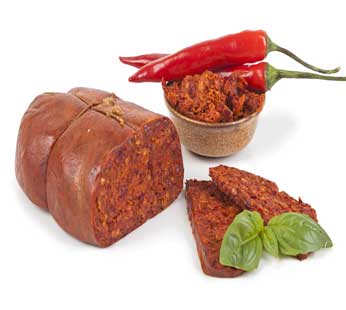NEW PRODUCTS








Italian Food Products in America and outside the EU.
Italian Food Products in America and outside the EU. For private reasons such as, above all, for commercial ones (import and export), sending food abroad is one of the most used practices when it comes to couriers and shipments. Foods are in fact the most shipped products in the world and in this our country is among the undisputed protagonists thanks to the fame and goodness of Made in Italy. Pasta, parmesan and parmesan, ham, wine and sparkling wines, just to name the most common, often travel around the world and are in great demand, as are our agri-food products in general. And they may have been sent by the caring mother towards her son in Erasmus or by our local small-medium business with clients in foreign countries.
E-commerce Gretal Food Products.
In fact, there are not a few food companies that focus on e-commerce, especially for niche products, the real added value of our cuisine and our production. But it is good to comply with the rules and restrictions that concern a wide range of foods, both inside and outside the European Union, which lead to the use of special carriers and packaging, as well as documentation to be attached.
Sending Italian food products abroad: “ban” lists.
Standard delivery of food by courier, both in Italy and abroad, incurs a series of limitations that apply to all forwarding companies. It is important, indeed fundamental, to be cautious when proceeding with this operation, even at the preparatory (and therefore packaging) level. Unless you request a specific service that helps to preserve the cold chain or that offers a safe and ad hoc transport of bottles or glass jars (for oil, wine, etc.), it is possible to entrust any non-standard food to a standard shipment. perishable and therefore not included in the following list:
Food List
Formaggi e latticini, Pasta fresca, Carne, Pesce, Surgelati e alimenti congelati, Funghi.
What to know more:
To these are added, as explained, the kinds placed in fragile containers such as glass (restrictions always inherent to the lists of objects prohibited by couriers). The reasons are as simple as they are important, not just for bureaucratic reasons. It is also a question of guaranteeing the integrity of the other packages and respecting even the most basic hygiene rules. For everything that concerns perishable, prohibited or glass foods, it is therefore mandatory to rely on those who offer specific services for those needs, leaving out standard shipments.
What can be sent without relying on specific services?
As a counterpoint to what is written above, foods defined as non-perishable, that is, can be stored for a long time at room temperature, are allowed: dry, vacuum-packed, various canned goods, always paying attention to the further limitations that may incur at customs. So you can ship pasta, rice, biscuits and breadsticks, long-life packaged products and vacuum-packed food without any worries. Tins are not always allowed and where it is, it is essential to take care of the packaging as much as possible, to prevent tuna, legumes and foods of various kinds in rigid and hard wrappers from damaging the other packages.
How to send Italian food products abroad?
Outside Italy: laws and limits
When you decide to ship food outside Italy, it is essentially necessary to check and therefore comply with the laws that regulate the entry into customs of food and objects not permitted in certain countries. The difference becomes marked if we compare two identical parcels sent within the European Union and outside. For the first, the consignment note will probably suffice, for the second it will be necessary to fill in the pro forma invoice and the declaration of free export (to find out more we suggest you read the article “Organizing a shipment abroad: this is what ‘is to know “).
Shipping of Italian food products to EU countries.
Ultimately referring to which foodstuffs we have outlined can be sent abroad or not by postal service or courier, we try to understand which general rules should not be absolutely disregarded. Otherwise the risk is always to find the shipment blocked at customs.
Countries outside the EU.
Generally speaking, if we talk about import and export, we mainly refer to non-EU countries, while within the borders of the European Union we talk about exchanges and movements (this obviously when it comes to commercial activities). In this second case, for the private individual as well as for the company, sending food abroad is bureaucratically simple and quick, with some limitations relating to wine and alcohol (for which customs procedures are necessary).
Shipping of Italian food products to America and non-EU countries.
When our intention is to send food outside the European Union, the situation becomes slightly more complex at the bureaucratic level. Not only because the documents we have talked about are necessary, that is the pro forma invoice and the declaration of free export, which must be completed with great precision and attention, but also because of the different rules between country and country.
Food and Drug Administration.
In the United States, for example, everything is regulated by the Food & Drug Administration, with which exporting companies are obliged to register and carry out certain procedures. If the shipment is private, the process is simpler: it does not require registration but only a documentation called “Prior Notice”. In general, we always recommend that you inquire with the courier you have decided to rely on to ship food abroad, in order to have all the necessary information.

